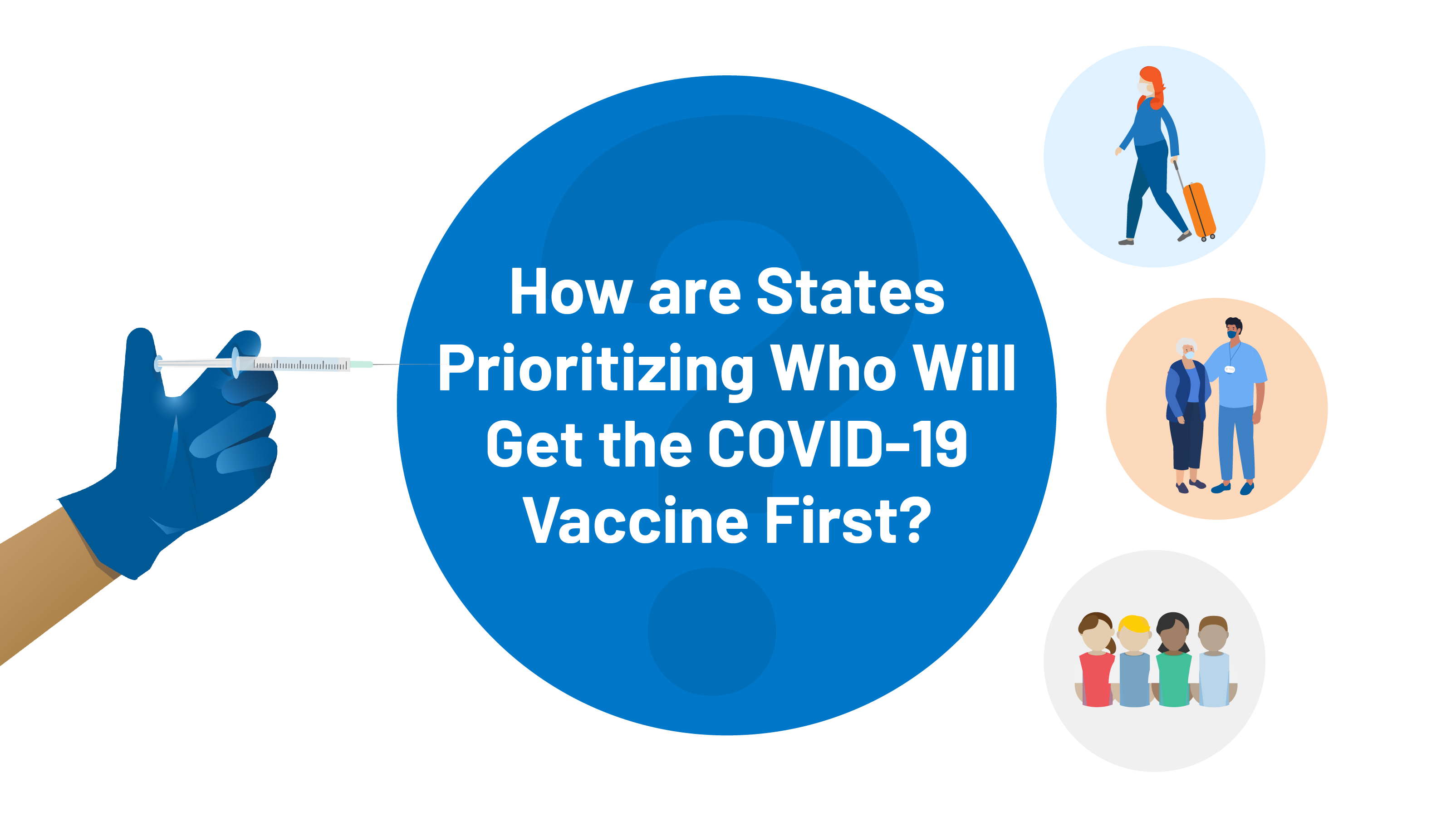
Introduction
On December 11, the Food and Drug Administration (FDA) issued the first emergency use authorization (EUA) for a COVID-19 vaccine – the Pfizer-BioNTech vaccine – followed by the Centers for Disease Control and Prevention (CDC)’s recommendation for use, clearing the way for delivery and administration of the vaccine throughout the country. Initially, supply will be very limited, meaning states have to make difficult decisions about who should get the first allocations.
To help guide these decisions, the CDC’s Advisory Committee on Immunization Practices (ACIP) released an interim recommendation on December 1 for the highest priority group (“Phase 1a”) to include health care workers (HCWs) and long-term care (LTC) residents; we estimate that this populations together represents about 17.6 million people. ACIP also provided further guidance regarding sub-prioritization within these groups. While ACIP has yet to finalize recommendations on subsequent prioritization (expected soon), according to presentations and materials provided in recent ACIP meetings, the committee is likely to recommend that (non-health care) essential workers be the next priority group (“Phase 1b”), followed by persons age 65 and older and those with conditions that place them at high risk for severe illness from COVID-19 (“Phase 1c”). These groups are much larger, which will likely make the next stages of prioritization much more difficult given that supply will still be limited (according to ACIP, there are an estimated 87 million essential workers, 53+ million seniors and more than 100 million individuals with high-risk medical conditions).
States look to and often follow ACIP guidance, but the federal recommendations are not binding and some states may choose to depart from the prioritization sequence outlined by ACIP, which could mean that initial access will depend on where people live. To see where states stand on prioritization, we collected and reviewed all statements and releases from state officials that reference the criteria they will use to prioritize vaccines during Phase 1 (these prioritization criteria build on and add detail to states’ initial vaccine distribution plans, which we already examined here). We did not assess how individual facilities (such as hospitals) will allocate vaccines once they arrive at their doors.
Findings
All states have released updated prioritization criteria for Phase 1, primarily in response to ACIP deliberations and guidance. Some had planned emergency meetings in anticipation of the FDA’s announcement and ACIP’s follow-on recommendation. Importantly, most indicate that these criteria could change depending on supply, vaccine characteristics, and other factors.
Most states are following ACIP’s Phase 1a recommendation.
- 45 states are following ACIP’s interim Phase 1a recommendation to prioritize HCWs and LTC residents. Some states will start vaccinating both of these groups together, while others will start with one of these groups first as they await more supply to start vaccinating the other. Still, even with these state criteria, decisions about how to allocate limited initial vaccines to HCWs and LTC residents will mostly be left to facilities.
- 7 states depart from ACIP’s Phase 1a recommendation in some way. For example, the District of Columbia and Utah include HCWs in Phase 1a but LTC residents in Phase 1b. In addition to HCWs and LTC residents, Nevada, New Hampshire, and Wyoming also include law enforcement in Phase 1a (per ACIP’s proposed framework, they are in 1b). Massachusetts also includes people incarcerated in prisons and those living in homeless shelters in Phase 1a (neither is explicitly mentioned in ACIP’s Phase 1 framework).
- More than 20 states also provide further sub-prioritization rankings or criteria within HCW and/or LTC resident groupings. For example, Alabama segments HCWs into “very-high”, “high”, and “medium” risk. Idaho provides specific rankings within each group. Texas groups Phase 1a into “first” and “second” tier.
The majority of states are still developing criteria for subsequent Phase 1 prioritization, but there are already some differences from ACIP’s preliminary framework.
- 30 states indicate that they are still developing more specific criteria for these next phases.
- Of the 21 with criteria, 8 follow ACIP for Phase 1b and 5 follow ACIP for 1c.
- The main differences lie in where states place people ages 65 and older and those with high risk medical conditions, relative to essential workers. For example, Alabama, Delaware, Florida, Maryland, North Carolina, and Tennessee each prioritize those 65+ and/or those with high risk medical conditions over non-health essential workers; North Carolina and Tennessee prioritize those with high risk medical conditions over those ages 65 and older.
- In addition, some include other congregate settings (not indicated in ACIP’s framework). Alabama, Nebraska, Nevada, North Carolina and Oklahoma explicitly include those living in homeless shelters and prisons in Phases 1b or c. Delaware and Tennessee explicitly include people incarcerated in prisons in 1c.
Discussion
Our review finds that almost all states hew to ACIP regarding initial allocations of a COVID-19 vaccine (Phase 1a) and have looked specifically at ACIP for decision-making. Beyond that, a good number of states are still developing criteria for Phases 1b-c. Given that ACIP has yet to issue recommendations for these phases, states may be waiting for further guidance. However, based on ACIP’s preliminary framework, there are some differences between state priorities and where ACIP is likely to land, primarily related to the prioritization of seniors and/or those with high risk medical conditions relative to non-health essential workers. Moreover, these later prioritization decisions are likely to be more difficult given the large numbers of people in these groups and continued limits on vaccine supply.
"who" - Google News
December 15, 2020 at 02:24AM
https://ift.tt/3oVsWcv
How are States Prioritizing Who Will Get the COVID-19 Vaccine First? - Kaiser Family Foundation
"who" - Google News
https://ift.tt/36dvnyn
https://ift.tt/35spnC7
Bagikan Berita Ini















0 Response to "How are States Prioritizing Who Will Get the COVID-19 Vaccine First? - Kaiser Family Foundation"
Post a Comment